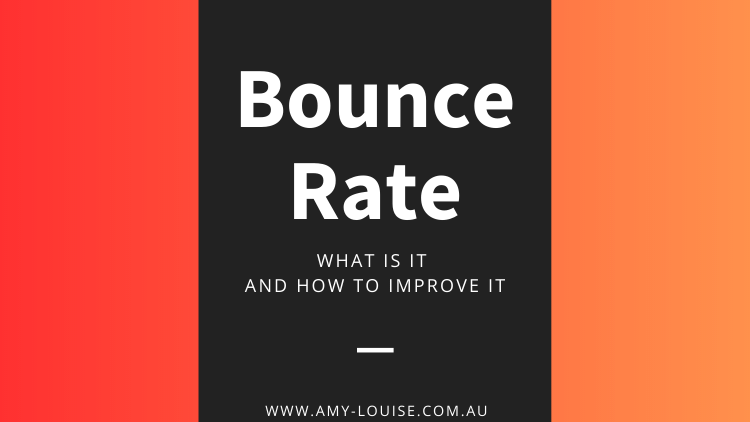
Proven Strategies for Improving Website Bounce Rate
In the vast digital landscape, a website bounce rate is a critical metric that can make or break its success. A bounce occurs when a visitor lands on your website and leaves without interacting further. While a high bounce rate might seem daunting, understanding its root causes and implementing strategic solutions can significantly improve your website’s performance. Let’s delve into the world of bounce rates and explore how to enhance your website’s user engagement.
Understanding Website Bounce Rate
A bounce rate is a metric representing the percentage of visitors who enter your site and then leave (“bounce”) rather than continuing to view other pages within the same website. It’s a double-edged sword, as it can indicate both positive and negative user experiences. Sometimes, a high bounce rate might result from Google’s algorithm directing visitors to the wrong pages due to search query discrepancies. However, it’s crucial to remember that a high bounce rate doesn’t always reflect your website’s quality; it can be related to external factors like search engine algorithms or the search terms the user types.
Strategies to Improve Website Bounce Rates
- Prioritise Page Load Speed: A slow-loading page can significantly deter visitors, especially on mobile devices. Ensure your website loads swiftly to keep users engaged and prevent them from bouncing off.
- Enhance Site Search Functionality: An intuitive site search feature can help users find the specific content they’re after, reducing the likelihood of them leaving your site prematurely.
- Streamline Navigation: A user-friendly navigation system can guide visitors to the information they need quickly and efficiently, thereby reducing website bounce rates.
- Invest in Design: A visually appealing and trustworthy website design can encourage users to spend more time exploring your site.
- Optimise Content: Break your content into shorter, digestible paragraphs for better readability. Incorporate a mix of engaging content types, like videos and high-quality images, to hold your visitors’ attention for longer.
- Keyword Relevance: Use relevant keywords to signal your content’s topic to search engines, which can help reduce your website’s bounce rates by attracting the right audience.
- Target Audience: Tailor your content to a specific, relevant audience to boost engagement and user satisfaction.
- Minimise Intrusive Elements: Avoid pop-ups and distracting ads that can disrupt the user experience and increase website bounce rates.
- Clear Call-To-Action: A compelling and visible Call-To-Action (CTA) can guide users towards meaningful interactions on your site.
- Fix Broken Links: Broken links can frustrate users and lead to higher bounce rates. Regularly check and fix any broken links on your site.
- Implement Internal Linking: An effective internal link strategy can enhance user navigation and keep them engaged for longer.
- Create a Useful 404 Page: A well-designed 404 page can guide users to other relevant pages on your site when they encounter a dead end.
- Consistent Content Updates: Regularly publishing fresh content can keep users interested and coming back for more.
- Display Credibility: Showcase your products/services, security seals, and other trust-building elements to reassure visitors of your site’s legitimacy.
Leveraging Analytics for Website Bounce Rate Reduction
Tools like Google Analytics and Microsoft Clarity can provide invaluable insights into your website’s performance metrics, including bounce rate, time on site, and pages per session. These tools can help you understand user behaviour better, allowing you to diagnose the causes of high bounce rates and make informed improvements. Remember, the ultimate goal is to create a website that users love, leading to better Google rankings and overall success.
Understanding Your Audience
Understanding your audience is one aspect that must be considered when trying to improve your website bounce rates. Knowing who your users are, what they’re looking for, and how they behave can provide invaluable insights into how to keep them on your site longer. Use tools like Google Analytics better to understand your audience demographics, interests, and behaviour. This data can help you tailor your content, design, and site functionality to meet your audience’s needs and expectations better, thereby reducing your bounce rate.
Mobile Optimisation
In today’s digital age, most web traffic comes from mobile devices. Therefore, ensuring your website is optimised for mobile reduces your bounce rate. A site that is difficult to navigate on a mobile device or takes too long to load can quickly frustrate users and cause them to leave. Implement a responsive design that adapts to different screen sizes, optimise images and other media for faster loading, and ensure buttons and links are easily clickable on a smaller screen. By providing a seamless mobile experience, you can keep mobile users engaged for longer and reduce the likelihood of them bouncing.
User Feedback
Lastly, consider the value of user feedback in improving your website bounce rates. Encourage users to provide feedback about their experience on your site. This feedback could be through a simple pop-up survey, feedback form, or even direct emails to your subscribers. User feedback can provide direct insights into what’s working and what’s not on your site. Your navigation may be confusing, or your content isn’t meeting users’ needs. By listening to your users, you can make targeted improvements that enhance the user experience and reduce your bounce rate.
Improving your website’s bounce rate is a journey, not a destination. It requires continuous effort, testing, and optimisation. By understanding the reasons behind high bounce rates and implementing the strategies outlined above, you can create a more engaging user experience, reduce bounce rates, and, ultimately, boost your website’s performance.
Need help to improve your website bounce rate?
To understand where your website could improve, take advantage of my special discounted Video Website SEO Audit. It is designed to help you identify the areas where your website may be underperforming and equip you with actionable recommendations to maximise your online presence.
